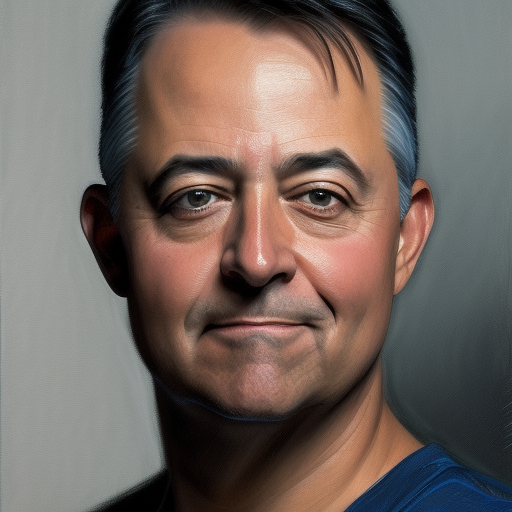And Two More Things
 Cary Millsap
Cary Millsap
In my recent Christmas story article, I mentioned that, to master a skill, there are three assets you need: knowledge, tools, and network. Actually, there are two more—making five in all—and they're really important. I've learned and relearned them as an Oracle executive, as an entrepreneur, and as the coach of my 6-year-old son's baseball club (back in 2005).
To create great players, you need five things:
The skills to perform the job (knowledge)
The equipment to execute the skills (tools)
Teammates that you can trust (network)
Understanding of what the job is (what)
Understanding of why that job is important (why)
Once you understand this framework, you can use it to make your team better.
Here's an example.
It can be very difficult to look a 6-year-old baseball player in the eyes and say, "You're going to be our right-fielder." How the player interprets that will depend on his or her prior experiences about what it means to be a right-fielder. On a not-very-good team, right field is where a coach might try to "hide" a kid who's not so good at catching and throwing. So being told you're the new right-fielder might feel like being told that you're going to be the notes-taker for today's meeting.
Sometimes, what makes a team a not-very-good team is a culture in which people feel that the job they've been assigned is demeaning. It's easy to imagine that people feeling such a way is certainly not optimal for the team, right?
So let's see how the five-asset framework helps us make things better.
Knowledge. Of course, every child on our team expects to learn how to play better baseball. We're going to learn that in our practices and our games. We're going to have full, busy, fun, challenging practices. Most of the kids on my team are going to watch at least part of three or four pro games a week, too, on TV. Because they love baseball. That's all they talk about when they're together.
Tools. We're so fortunate. Every child on our team had a glove and a bat, and shoes and a hat. And a whole uniform. That's because we had mommies and daddies who were willing to make the sacrifices necessary to make their kids look like real major leaguers.
Network. My team was blessed with an abundance of connections. We had smart, competitive, loving moms and dads who came not just to all our games, but also most of our practices. Everybody there had access to all the YouTube videos we could eat, and we even knew a handful of retired Major League Baseball players we could ask for help. (There have been only about 20,000 of those, total, since 1876, yet I can sit here and name at least 7 who personally helped our kids.)
So, what else could you need? You need two more things.
What. You need an understanding of what the job is. It's my responsibility as a leader to provide that. It is my job to make sure that you understand your job. And it's on me to fit that job description to your level. For my 6-year-old right-fielder, your job is to keep balls out of my outfield. Of course, if you were 18, there'd be a lot more to it than that, but if a 6-year-old can just "keep balls out of my outfield," then our team's going to be fine in right field. Of course there are details. Catch everything you can. If you can't catch it in the air, then run as fast as you can to get behind it, and then throw it on a line, quickly, to the infielder who's waving his arms at you. We'll work on it in practice. You'll get good at it. Turns out, a 6-year-old can learn how to do all that surprisingly well.
Why. And finally, my 6-year-old right-fielder needs to understand why the job is important. Your old coach may have taught you—whether intentional or not (it's terrible either way)—that the right-field assignment is demeaning. Once, in a huddle, I asked all the kids, "Who's the most important player on the team?" They guessed "Matty" and "Pitcher" and all sorts of answers like that. I told 'em we don't know yet! The most important player on the team is the kid the hitter hits the ball to next. Kids are going to hit the ball to right field, and your team is counting on you to keep balls out of right field. Your job is important. A leader makes sure that every job is important.
What and why often go without saying. (It went without saying in my own Christmas story!) Too often, they go without even noticing. But when you look at the world through the lens of all five of the assets I've enumerated, you might be surprised at how much waste is being caused by neglecting what and why.
On the baseball field, I don't want my little 6-year-old player standing there all bummed out while balls are rolling around in my outfield. At work, I don't want my 40-year-old programmer sitting there all bummed out while ideas and assignments go unrecorded. In my specific role as the leader of a company, I'm responsible for teaching you what my business does and why we do it, so you'll want to buy my products and visit my classroom.
What and why are about understanding and motivation. They're where meaning, resilience, and drive come from. But what and why aren't always obvious. They can require meticulous thought to discover. It's one of the most important jobs of a good leader to invest into understanding and teaching what and why.
Subscribe to my newsletter
Read articles from Cary Millsap directly inside your inbox. Subscribe to the newsletter, and don't miss out.
Written by

Cary Millsap
Cary Millsap
I'm known by many around the world as an Oracle optimization specialist, because I've done that type of thing for a living since the early 1990s. I'm a former Oracle executive. I have three children who aren't children anymore, and a startup that isn't a startup anymore. My company makes Oracle optimization software. I've written books including "Optimizing Oracle Performance," "Tracing Oracle," and "Mastering Oracle Trace Data." My latest book is called "How to Make Things Faster." It's for anybody who's curious about why systems perform the way they do, and what you can do about it. I do a lot of public speaking. I've never—not once—given a presentation using slides I didn't make myself. I love to think and write and help people make things better.